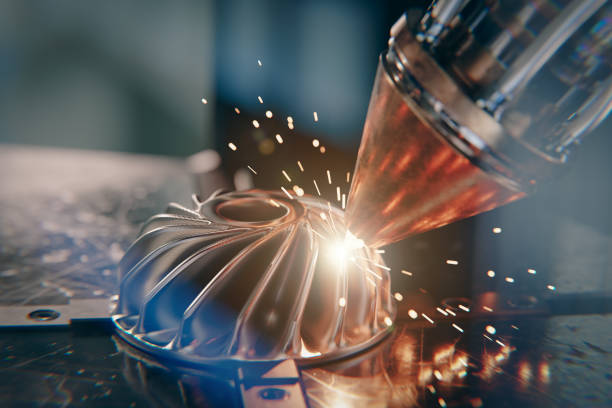Understanding Nesting in Additive
.png)
Understanding Nesting in Additive
As part of our work at Phasio, we often collaborate with manufacturers scaling up production and offering end-use parts to their clients. One crucial aspect of optimizing this production, particularly in additive, is understanding and managing nesting density within the build chamber.
What is Nesting Density?
Nesting density refers to the arrangement and packing of parts within the build chamber of an additive manufacturing machine. Essentially, it’s about maximizing the number of parts that can be produced in a single build cycle without compromising quality or causing issues during the build process. Effective nesting minimizes wasted space and ensures that each build is as efficient as possible.
Mathematically speaking, the nesting density can be defined as:

The idea is that a perfectly filled build chamber would have a nesting density of 1. However, this almost never happens because parts are rarely perfect rectangles of complementary size. We therefore usually expect a nesting density of between 0.3 to 0.7.
The higher the nesting density, the more you are utilizing the build chamber of the machine. Therefore, it’s extremely important for an additive business to maintain as high of a nesting density as possible.
Why is nesting so hard?
Nesting is the process of squeezing as many parts into the build chamber as possible. It sounds and feels intuitive, but actually, this is an abstraction (a rather painful one, too) of the Knapsack problem, which is NP-complete. The Knapsack problem involves selecting items with given weights and values to maximize the total value without exceeding a weight limit. Similarly, nesting requires arranging parts in a build chamber to maximize space utilization and minimize material waste while adhering to constraints such as part geometry, orientation, and build process limitations.
Several factors contribute to the complexity of nesting:
- Geometric Complexity: Parts come in various shapes and sizes, making it difficult to find the optimal arrangement. Irregular geometries add layers of complexity to the nesting process.
- Orientation Constraints: Some parts need to be oriented in specific ways to ensure proper build quality and structural integrity, further complicating the nesting algorithm.
- Build Process Limitations: Different additive manufacturing technologies have unique requirements and constraints, such as minimum spacing between parts, which must be considered during nesting.
- Computational Intensity: Finding the optimal nesting solution requires significant computational power and advanced algorithms. It often involves running numerous iterations and simulations to identify the best arrangement.
Due to these challenges, nesting is often handled by specialized software designed to address the intricacies of the problem efficiently.
Why is Nesting Density Important?
Optimizing nesting density is vital for several reasons:
- Cost Efficiency: By maximizing the number of parts in each build cycle, manufacturers can reduce the cost per part. This is particularly important for technologies like Multi Jet Fusion (MJF), where the cost-effectiveness of low-volume production runs is a significant advantage.
- Time Savings: Higher nesting density means more parts are produced in the same amount of time, leading to faster overall production cycles. This is crucial for meeting tight deadlines and reducing lead times.
- Material Utilization: Efficient nesting reduces the amount of unused material, which can be costly and environmentally wasteful. This is especially relevant for expensive materials commonly used in additive manufacturing.
- Consistency and Quality: Proper nesting ensures that parts are not only packed efficiently but also in a way that avoids issues like warping or incomplete builds, maintaining high-quality standards across all parts.
Software Solutions for Nesting
Several software packages can help manufacturers optimize nesting density. Here are some of the most prominent ones:
- Materialise Magics: Known for its comprehensive suite of tools for data preparation, Magics includes advanced nesting capabilities that help ensure optimal part arrangement. It supports a variety of additive manufacturing technologies and materials.
- Autodesk Netfabb: This software offers powerful nesting features alongside its extensive suite of additive manufacturing tools. Netfabb’s algorithms can automatically arrange parts to maximize space utilization and minimize material waste.
Conclusion
Nesting density is a critical factor in the efficiency and success of additive manufacturing operations. It has a real and tangible impact on the bottom-line of manufacturers, particularly in additive. Manufacturing is experiencing a wave of digitisation right now, with AI likely to change the way many manufacturers operate. Over the coming years, we expect to see the emergence of new solutions that improve upon existing nesting algorithms.
.svg)



